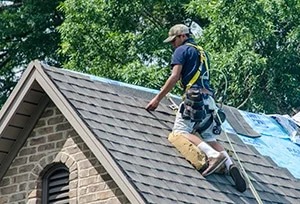What Building Inspectors Look For in High-Risk Properties
Buying a property is one of the biggest investments most people make, yet appearances can be deceiving. A house may look perfect from the outside but conceal serious issues that threaten safety and value. This is where a building inspector becomes essential. Their trained eye helps identify structural weaknesses, pest infestations, and hidden water damage that could cost thousands if ignored.
Spotting Red Flags Before They Become Regrets
High-risk properties often appear well-kept but may hide significant defects beneath fresh paint or simple repairs. Professional inspectors understand how to identify early warning signs, such as cracks, dampness, or structural movement, that point to deeper issues. Their assessments combine detailed observation with testing tools designed to uncover hidden risks early.
read more : How to Perfectly Style Food Photos with Background Removal Techniques
Foundation and Structural Movement
One of the earliest indicators of trouble is small cracks or uneven floors caused by foundation displacement. While these may seem minor, they often signal soil movement or subsurface subsidence. Building inspectors measure and monitor such cracks to report signs of structural stress. Early detection prevents extensive underpinning work or wall replacement later.
Roof and Ceiling Weaknesses
The roof cavity can reveal the true condition of a property. Inspectors look for sagging trusses, broken insulation, or stains from previous leaks. These issues lower thermal efficiency and indicate poor maintenance. Timely roof restoration prevents long-term deterioration and ensures that the home remains weatherproof, sturdy, and energy-efficient.
Drainage and Moisture Concerns
Even new homes can experience major issues if drainage is poor. Water pooling near the foundation can cause erosion, dampness, or mould. Inspectors examine ground slope, gutters, and stormwater outlets to ensure proper function. Effective drainage protects the foundation, supports structural stability, and maintains a dry, healthy indoor environment.
Hidden Dangers Exposed
Many of a property’s most costly problems remain unseen until professional tools reveal them. Skilled inspectors use technologies such as thermal imaging, moisture meters, and probes to detect hidden damage within walls, ceilings, or subfloors. This deeper inspection layer helps prevent expensive surprises after purchase.
Detecting Termite Damage
Termites silently destroy timber structures from within. Inspectors identify termite activity by tapping beams, checking blistered paint, or spotting mud tubes. If evidence of pests is found, immediate termite treatment is recommended to halt further damage. Acting quickly avoids large-scale structural repairs and preserves the home’s long-term safety.
Timber and Internal Decay
Timber framing, skirting boards, and floorboards are prone to decay caused by dampness or pest exposure. Even a small area of peeling paint can mask deeper damage beneath. Inspectors closely assess timber integrity to ensure repairs address the source of deterioration rather than simply concealing symptoms.
Concealed Moisture and Rot
Water hidden behind ceilings or walls can gradually weaken a building’s structure. Moisture meters detect these issues early, preventing rot, mould, and potential electrical hazards. Early intervention ensures the building remains dry, durable, and energy-efficient.
Why It Matters
A comprehensive inspection does more than identify defects—it provides confidence, clarity, and leverage in decision-making. Buyers gain insight into repair needs before committing, while sellers can correct issues before listing. Understanding such details ensures fair negotiations and protects both parties from unexpected costs or safety concerns.
Protecting Your Investment
A property hiding major defects can quickly become a financial burden. Inspections uncover issues before contracts are signed, giving buyers the opportunity to negotiate, request repairs, or reconsider the purchase. Investing in inspection services saves thousands in restoration and repair expenses later.
Ensuring Safety and Compliance
A thorough inspection also verifies that safety systems are compliant. Electrical wiring, plumbing, and smoke alarms are all checked for adherence to Australian standards. Addressing these ensures occupant safety, reduces hazard risks, and maintains legal compliance for property owners.
Maintaining Long-Term Value
Ongoing maintenance and inspections protect property longevity. Addressing minor problems promptly whether by improving drainage, repairing cracks, or scheduling roof restoration keeps minor faults from becoming major ones. A well-maintained property ensures safety, comfort, and higher long-term resale value.
FAQs
What makes a property high-risk?
High-risk properties often show cracks, moisture problems, or pest activity. Homes in termite-prone or flood zones need closer inspection to avoid hidden structural or safety issues.
How long does a building inspection take?
A standard inspection lasts two to three hours. Larger or older homes may require extra time to assess roofing, subfloors, and load-bearing components thoroughly.
Is termite inspection included?
Basic pest checks are part of most building inspections, but a thorough termite treatment assessment is conducted separately to confirm current infestations and prevent future damage.
How often should I have my roof inspected?
Inspect your roof every two years or after extreme weather. Regular roof restoration helps prevent leaks, structural decay, and energy inefficiency.
Can I attend the inspection?
Yes, attending allows you to understand findings in real time, ask questions, and make informed choices about repairs or negotiations.
What happens if major issues are found?
If significant problems arise, you can negotiate for lower pricing, request necessary repairs, or withdraw the offer safely, avoiding expensive future risks.







